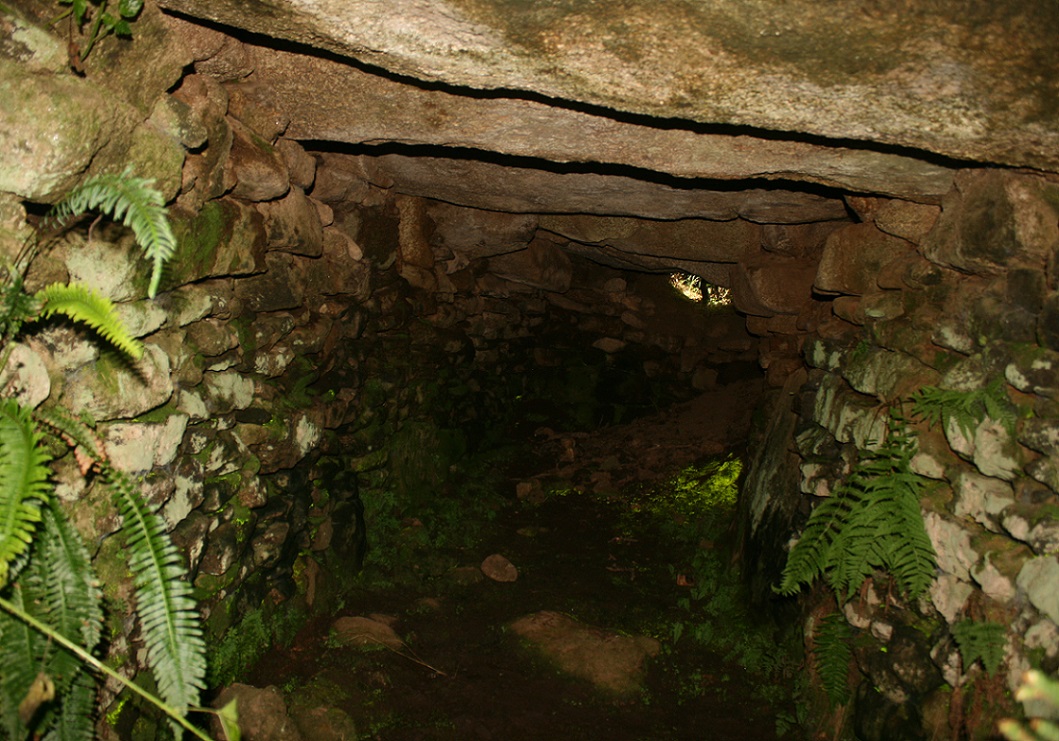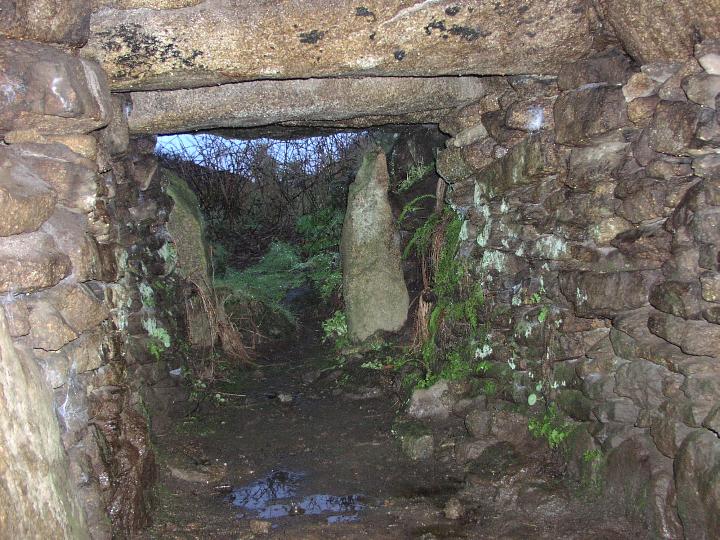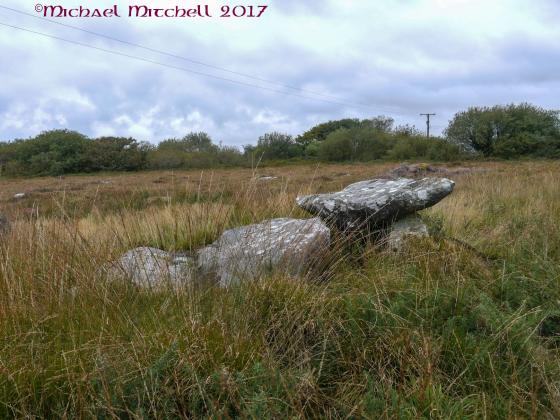




The Pixies house, after I’ve trampled down all the brambles from the entrance.

Presuming this is not the original entrance, is this a bend in the original design.

Barred and choked entrance, luminous fungus lights the way.

The hole at the back seems to be getting smaller judging from older pictures.

Luminous fungus or mold or pixie dust, natures pretty.

The portal stones at the entrance are not original, apparently.

A barred entrance, to impede entry, works a treat.

The roofing stones, not much to see here, all the fun is inside.

The entrance was a bit overgrown, but easily negotiable

Jane investigates the far end of the fogou, giving an idea of its size

Back along the passage

An original ‘creep’ entrance or a hole in the roof? Actually I kinda favour the latter

The view inside the fogou. Note the daylight at the far end.

The entranceway

The view from the gate
...a piece of cake to find, thank God. Isolated on the edge of a field, it’s gorsey mound forcing the ground up slightly, we reached it as dusk fell and the hand of starvation threatened to force me to murder Moth and consume his flesh in some debauched food ritual.
A very impressive chamber about 8 metres long and high enough to force me to have to reach up to feel the stones overhead. I was intrigued by its isolation. Every other fogou we had visited had some sign of settlement very close or nearby. This has nothing now. Perhaps it once did.
6th October 2003
The fogou is actually in sight of the road, opposite the entrance gate to Trewardreva House itself. A herd of cows in the adjoining field made me slightly nervous, as they all charged toward the gate as I entered the field. I wasn’t sure if they could get into the field containing the fogou…
Andy Norfolk described this as a “cosy, cuddly fogou” on the Stones Mailing List, and I’d have to agree with him. I didn’t descend all the way in, partly because of my bovine nerves, but it looks as if the main passageway may open out to the right at the end. Craig Wetherill in Cornovia refutes this stating that “it was once thought a branch passage may have run southwards…this is now considered unlikely”.
Daylight pervades the far end of the fogou, where the covering stones have shifted somewhat, but this didn’t detract from the cuddliness for me.
John Wilmet, 78 years old, began by telling me the following tale about an allee couvert: “William Murphy, who married my sister, once went to the pisky-house at Bosahan with a surveyor and the two of them heard such unearthly noises in it that they came running home in great excitement, saying they had heard the piskies.”
This is surely the place to which this anecdote (from Evans Wentz’s ‘Fairy Faith in Celtic Countries’ 1911) refers, as if you look on the map it is between Bosahan farm and Bosahan quarry.
Note re location from Stones Mailing List:
Go through the field gate opposite the fancy gateway to Trewardreva.
The fogou is in a low mound by the edge of the field more or less directly in front of you, but slightly to the right. The entrance is in the brambles at the nearest end, but it’s quite accessible.
Craig Weatherhill’s ‘Cornovia: Ancient Sites of Cornwall and Scilly’ (Cornwall Books – 1985, revised 1997 & 2000) calls this ‘Piskey Hall Fogou’ (the OS map calls it ‘Pixie’s Hall’)and gives it a good mention, a photo, and one of his sexy little drawings. The text says “A semi-underground structure once associated with a now-destroyed Iron Age enclose settlement. It is a slightly curved passage, the roofed part of which is 8.2m long. Piskey Hall is unusual among fogous in that its walls are vertical, not corbelled inwards; as a result, the weight roof slabs are enormous. The fogou probably extended a little way further to the north-east where the present end wall is modern – as are the two jambstones at the present south-western entrance. It was once thought that a branch passage may have run southwards from the inner end of the fogou, but this is now considered unlikely. The structure was built against a low outcrop of granite, and its half-underground nature makes it a prominent object in the field”
This site was once part of an Iron age village. The passage of this one is about 8 metres long.
It can be found about half a mile north of Constantine on the B3291 in a field opposite Trewardreva House.
This site is also known locally as the Piskey hall




























































